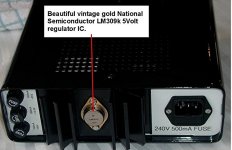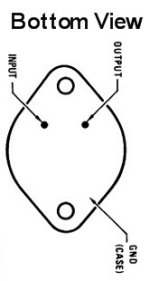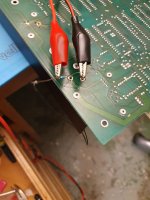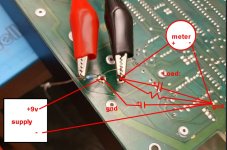I've looked a bit on the internet for those TO-3 voltage regulators, but they seem to be hard to come by. So it should probably be possible to put in regular 7505 regulators? But it might not be so pretty.
Part of it is most TO-3 package regulators don't go under the 7805 name very often. You will find more if you search under UA7805 on ebay. Avoid late manufacture ones from the far east with the large blue areas of glass insulation where the pins exit the body, there are a lot of poor clones +/- fakes for these parts, much like the proverbial 2N3055. Get early date code ones that look original where possible.
The "classic" 5V TO-3 voltage regulator from the 1970's era was the LM309k. These are easy to get and still were sold even now I think by the major suppliers, but are called "LM309k-Steel".
Yep: still have em in stock at Newark, but not cheap:
a little cheaper at digikey:
I have a large collection of the original LM309k's, these were made by National Semiconductors, they have a gold plated base, they are true works of art and the internal design & the protective systems were inspirational. Last time I looked Surplus Sales of Nebraska has some of these gold plated originals left.
But, there are some very good replacements that are mil spec types with an entirely different number system M38510/10706BYA. If I were fitting new regulators to my PET, I would use these, really really good quality parts, this seller is very good too:
1 PIECE M38510/10706BYA SILICON GENERAL.
www.ebay.com
A few sellers charge nutty prices for these mil spec parts, So if you need some get those ones from Huskerfan as it is a sensible price at $14.99.
(Here is a trap never to fall into; Of late some designs have appeared using electronic switching modules to replace TO-3 voltage regulators, or the 7805, in the interests of less heat dissipation. But, they are not as good in every other respect including output noise but worse, don't have the sophisticated thermal and and current overload/short circuit protection features of the original 7805 and not only that, they have failure modes where they can can over-voltage their outputs and damage IC's they supply. I don't go near these with a barge pole. The analog regulators practically never fail this way, with time and age the worst they do is have an output voltage that is a little low. It is better to have the heat dissipation and the safety intrinsic to the analog regulator that National Semiconductors created)
I have attached a photo of National's original part on a home made power supply. I have also attached a remark from National's data sheet. Perhaps tempting fate saying they are "blowout proof", but on the whole I would have to agree they are.
Another detail, there were some beefed up versions made that were good to 5A load, I think they were the uA78H05 by Fairchild...yes here is the .pdf:






